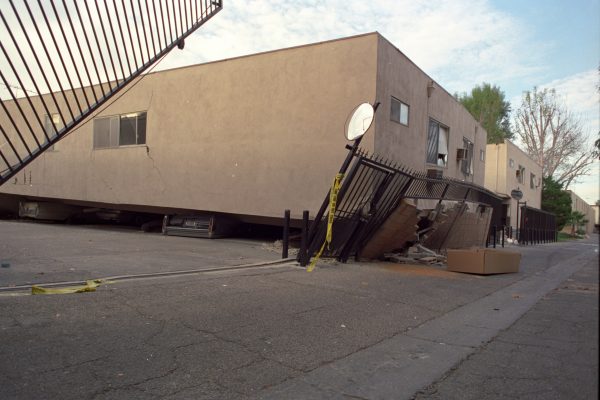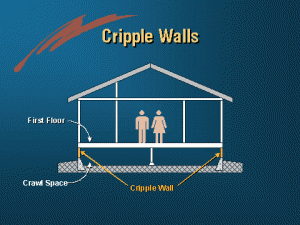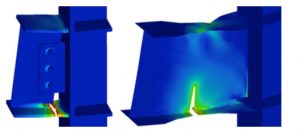
Owners of some commercial and residential buildings in West Hollywood may be required to undertake what’s likely to be an expensive effort to ensure their buildings can withstand a future earthquake. That effort also might have a financial impact on tenants if owners are allowed to pass the retrofit costs along.
The City Council last night informally agreed to adopt by the end of the year a “seismic retrofit” ordinance that will apply to about 900 buildings — roughly one in five of WeHo buildings. The program will require owners of those buildings to begin by July 2017 a project to stabilize them.
The city engaged a consultant, Degenkolb Engineers, to conduct a seismic survey of WeHo buildings and categorize them according to type of risk. It also worked with an advisory group that included building owners, a member of the Planning Commission and of the Historical Preservation commission and an architect and an engineer and sought input from Structural Engineers Association of Southern California.
The retrofit ordinance would apply to four categories of buildings:
1) Wood-frame buildings with soft, weak or open front walls, which would include some of those with parking on the first floor. Seismic strengthening will be mandatory for weak buildings of that type for which a construction permit was applied for before Jan. 1, 1978. A report from the city’s Community Development Department estimates there are 780 such buildings in West Hollywood. The report recommends priorities for addressing issues with these buildings, with those of 16 or more housing units ranking first, followed by three-story buildings with fewer than 16 units and then all others. Owners of these buildings will have five years to complete any necessary fixes.
.

2) Wood-frame buildings with “cripple walls” and “sill plate anchorage.” A cripple wall is less than a full story tall and usually is found between the first floor and the foundation of a building. A sill plate is the bottom horizontal piece, often of wood, to which vertical parts of a wall are attached. In older houses such sills sometimes are too close to the ground and can rot out under a building. Seismic strengthening for such buildings is not mandatory but is up to the owner.
3) “Non-ductile” concrete buildings, which are buildings with rigid and unbendable concrete walls that are unlikely to flex during an earthquake. Seismic retrofitting of those buildings is mandatory. The Community Development Department report says that construction of such buildings continued until approximately 1980, after which “building codes required ductile detailing of concrete buildings.” The retrofit requirements will apply to those buildings built under codes enacted before 1979. The city estimates there are 55 non-ductile concrete buildings in West Hollywood and another 65 buildings that might fall into that category after additional inspections. Owners of such buildings will have 10 years to complete fixes of major problems and 20 years to conduct a complete retrofit. The top priority for such buildings is those with eight or more stories, followed by those with three to seven stories and then those with one or two stories.

4) Pre-Northridge steel moment frame buildings. These are buildings with load-bearing steel frames in which the beams are rigidly connected to the columns. Many such buildings were found after the 1994 Northridge earthquake to have suffered fractured columns because the steel was not flexible enough. Each of the 31 buildings in this category will have to be analyzed by an engineer to determine what flaws they might have. Owners of these buildings will have to meet the retrofit deadlines established for non-ductile concrete buildings.
While the City Council generally agreed to the proposed retrofit requirements, council members John D’Amico and John Heilman asked city staffers to consider whether the occupancy of a building should move it up on the retrofit priority list. That means a residential building would likely have a priority than an office building or retail building that isn’t occupied 24 hours a day.
The council postponed to a future meeting a discussion of whether or how it might help building owners pay for the retrofits. “… There are very limited resources available at this time, on the state level and the federal level, to financing seismic upgrades,” the Community Development Department report said. It noted that San Francisco, Berkeley and Los Angeles have opted into “property assessed clean energy” (PACE) programs, in which private lenders make loans to property owners that are repaid through a voluntary assessment on the property tax bill. With terms of as much as 20 years, the financial impact of such loans is less than an upfront payment of retrofit costs. The report also suggested that tenants might be asked to cover part of the retrofit costs.
The council will consider at a later meeting a proposal by Councilmember John Duran to put on the March 2017 ballot an increase in the city’s hotel room or sales tax or a marijuana sales tax to help fund seismic retrofits. That proposal estimates a cost of $60,000 to $130,000 for retrofits to smaller wood-frame apartment buildings, with larger buildings costing millions. Duran suggested that the city poll local residents to see which tax approach might be most acceptable.
In West Hollywood, the sales tax currently is 9%. The maximum tax allowable under state law is 10%. The city’s hotel room tax is 12.5%, with each percentage point increase generating an estimated $2 million, a figure that could increase to $2.5 million when new hotels under construction are completed. In November, California voters will be presented with Proposition 64, a ballot measure that will legalize recreational marijuana for adults over 21. A 1% tax on existing medical marijuana sales in WeHo would generate about $100,000 in revenue, with that figure expected to grow substantially if recreational marijuana sales are made legal.

Yes, very interesting this just happens to coincide with The Council already approving the destruction of West Hollywood as we know it. This finally gets the job done. Why now? Why not after Northridge? Why not 10 years ago? The Council has their own Masterplan. The pretend to care about community feedback then just do what they want…..or shall we say what their Cronies (aka contributors/developers) want.
How does one determine whether a building falls under any of these four types?
I think what you’re going to see is a lot of the older residential buildings just being torn down (majority of these the rent-controlled buildings). The owners cashing in and building “luxury condos”. I don’t think they’ll bother wasting the time, effort and money to retrofit an old apt. building (most commonly the dingbat style). They’ll just take advantage of the real estate boom. They’ll sell the land and even more unaffordable condos will be built. This is a developers wish come true.